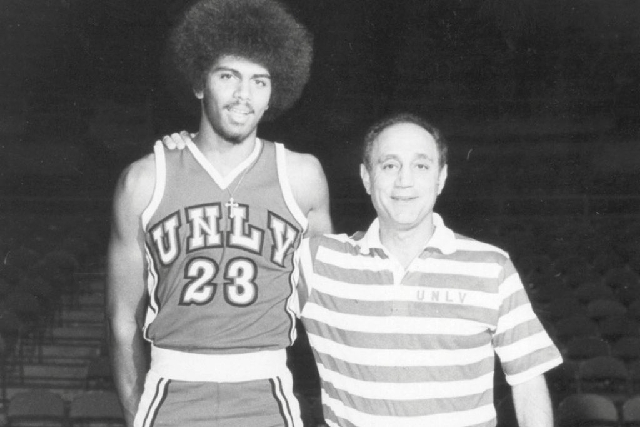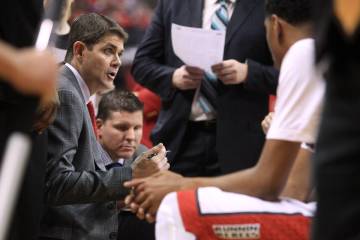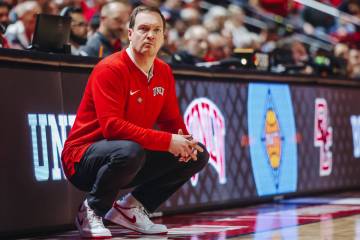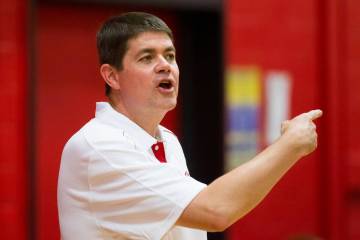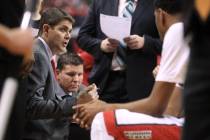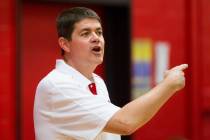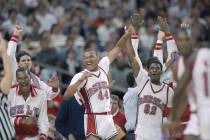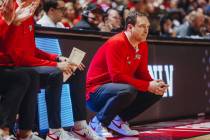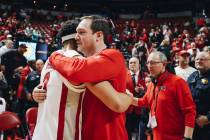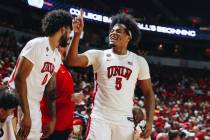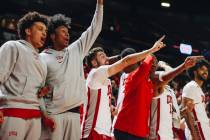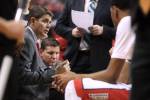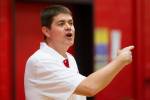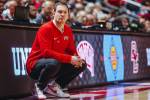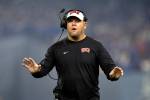Signs of Tarkanian’s innovations all over college game
It was one of Jerry Tarkanian’s better days.
The 82-year-old UNLV basketball icon was relaxing on the couch at his son Danny’s house, enjoying a pleasant spring afternoon in Las Vegas. Other than an occasional cough, he appeared to be doing well.
His health has been a concern for some time. A year ago, Tarkanian was in intensive care at Mountain View Hospital with respiratory problems, his trip to the Final Four in New Orleans having been canceled.
Tarkanian has always loved the Final Four, even when he wasn’t coaching in it. But he’s well enough to travel and plans to be in Atlanta this weekend. In a touch of sweet irony, Atlanta is where he took UNLV to the first of the school’s four Final Fours back in 1977.
But this trip potentially could be his most special. Tarkanian is a finalist for the Naismith Basketball Hall of Fame, and if he received 18 or more votes from the 24-member Honors Committee, he finally will be welcomed as part of the class of 2013.
He has been a finalist before, in 2001. But he didn’t have Twitter or Facebook to stump for him then. He didn’t have Hall of Famers going to bat for him on television like Bill Walton, Reggie Miller and Dick Vitale recently have. He has been written up in glowing terms by national media since his appearance on the ballot was announced in December. Even his critics have said it’s time for him to be inducted.
“I didn’t expect this kind of support,” he said. “It feels nice.”
Tarkanian is expected to learn his fate in the next few days. His exclusion from the Hall has long been criticized by supporters, and it has been a source of frustration for Tarkanian’s family, his former players and those who understand basketball.
But Tarkanian’s credentials go beyond the 784 Division I wins, the four Final Fours with UNLV and the 1990 national championship. He helped change the way college basketball is played today.
The aggressive, pressing style of defense and up-tempo, transition offense of Tarkanian’s UNLV teams can be seen everywhere these days. Watch the way Louisville presses on defense or the way Duke moves the ball quickly or Florida Gulf Coast’s attacking style at both ends of the floor. Tarkanian was doing that at UNLV back in the 1970s.
“There was hardly anyone playing that way back then,” Tarkanian said. “We had a big edge because we had great athletes who could go out and play that style.
“We did it against everybody. Most teams couldn’t play that way. I think that’s why we were so successful.”
Tarkanian primarily coached zone defense at Long Beach State before his arrival at UNLV in 1973. But in a radical departure from his philosophy, he thought the athletic players he was recruiting would enjoy playing a pressing, trapping style defense that would lead to fast-break opportunities. He also thought fans would take to that style.
“It was the best way to coach,” he said. “The players loved it and the fans loved it. We were trying to sell tickets to the (Las Vegas) Convention Center, and our style was very popular with the fans.”
Of course, the fact the Rebels won helped make it an easy sell. In 19 years at UNLV, Tarkanian went 509-105, a winning percentage of .829.
UNLV actually had played an up-tempo offensive style in the late 1960s under coach Rolland Todd. But Tarkanian took it to a different level. In 1973, there was no shot clock to speed the tempo. But Tarkanian’s teams forced opponents to play faster than they wanted — and with it came turnovers, transition baskets and scores in the 100s.
Even when the shot clock and 3-point shot were added to the college game in 1985 and 1986, respectively, UNLV was still speeding things up. Tarkanian merely incorporated the 3-pointer into his offense, and UNLV has the NCAA’s longest consecutive streak of made 3-pointers, currently at 875.
UNLV coach Dave Rice, who played for Tarkanian from 1989 to 1991 and was an assistant to him in 1991-92, said his impact on the game is clearly evident.
“He was an innovator,” said Rice, who just completed his second season as Rebels coach. “He was one of the first coaches to play pressure man-to-man defense and also go fast-break on offense.
“When I played for him, I knew what a great system it was. But it wasn’t until I was an assistant that I understood how brilliant his philosophy was. I can see why coaches everywhere use his ideas.”
Of course, he also was open to using someone else’s ideas and putting his spin on it. UNLV’s famed “Amoeba” defense, a combination of zone and man-to-man, was initially designed by Fran Webster at Pittsburgh in the 1970s. Tim Grgurich used it when he was coach at Pitt and he brought the Amoeba to UNLV when he joined Tarkanian in 1981. But Tarkanian made the Amoeba famous, and it won him a lot of games.
Danny Tarkanian, who played for his dad at UNLV and coached with him at Fresno State, said his father’s greatest accomplishment in basketball was turning struggling programs into successful teams on a national scale.
“He brought lower-level universities to the top level, and he did it everywhere — at Long Beach, at UNLV and at Fresno State,” he said. “Those schools had very little success before he got there, and he won big at schools you didn’t think could win.”
With that success came scrutiny by the NCAA, and many believe Tarkanian’s battles with college athletics’ ruling body are the foremost reason he has not been inducted to the Hall.
His son may ultimately be right. For all of Tarkanian’s innovations, his efforts to create opportunities for minorities and his willingness to give second chances to players of questionable character, it still comes down to winning. Without the 784 victories and the NCAA title, he would not be on the ballot, let alone a finalist.
As he laid on the couch, Tarkanian smiled. The chance to revisit the memories that defined his success apparently had perked him up. A good day indeed.
Contact reporter Steve Carp at scarp@reviewjournal.com or 702-387-2913. Follow him on Twitter: @stevecarprj.




